The Primary Care First Model, an alternative payment model offering an innovative payment structure for the delivery of advanced primary care, welcomed the involvement of Cohort 2 participants on Jan. 1. This cohort, which was open to all primary care practices that met the eligibility criteria, will participate from 2022 to 2026.
Participants in PCF Cohorts 1 and 2 can expect the following benefits:
Performance-based Adjustment: A practice’s PBA (which can be a positive or negative adjustment) is based on quality performance. If a practice passes a minimum quality threshold through the Quality Gateway and meets the national utilization measure benchmark, it will not face a negative adjustment. The practice may be eligible to receive a positive adjustment based on regional performance and continuous improvement. Quality performance will affect payments for the following year.
The Quality Gateway for practices in risk groups 1 and 2 consists of five measures:
Learn more about how DataGen can help you:
Contact us today!
Participants in PCF Cohorts 1 and 2 can expect the following benefits:
- an opportunity to increase revenue with performance-based payments that reward participants for reducing acute hospital utilization;
- the ability to assess and improve performance through actionable, timely data;
- less administrative burden so providers can spend more time focusing on patient needs; and
- potential to become a Qualifying APM Participant, which includes eligibility for a 5% incentive payment and eliminates Merit-based Incentive Payment System reporting requirements.
How are beneficiaries attributed to practices in the PCF Model?
Beneficiaries are attributed to practices prior to each quarter. If a beneficiary has selected a practitioner on MyMedicare.gov, they will be voluntarily aligned with that practice. Alternatively, if they have not made a selection, they will be attributed to the PCF practitioner that billed their most recent annual wellness visit or welcome to Medicare visit, or based upon a plurality of eligible primary care visits.What is the payment structure under the PCF Model?
The payment structure under the PCF Model includes a:- Total Primary Care Payment
- Performance-based Adjustment
Performance-based Adjustment: A practice’s PBA (which can be a positive or negative adjustment) is based on quality performance. If a practice passes a minimum quality threshold through the Quality Gateway and meets the national utilization measure benchmark, it will not face a negative adjustment. The practice may be eligible to receive a positive adjustment based on regional performance and continuous improvement. Quality performance will affect payments for the following year.
What is leakage and how can it affect my payments?
Leaked visits are encounters where a beneficiary receives primary care services from a provider outside of the practice. If an organization has multiple practices and a beneficiary receives care at a practice other than the practice the beneficiary was attributed to, this is still considered leakage. Population-based payments will be adjusted for leakage, calculated as the percentage of primary care visits that a beneficiary receives outside of their attributed practice during a four-quarter lookback period. Refinements have recently been made for the performance y2022 leakage adjustment to clarify the provider specialties included and to take place of service restrictions.How is quality measured in the PCF Model?
CMS uses a focused set of clinical quality and patient experience measures to assess practice quality of care.The Quality Gateway for practices in risk groups 1 and 2 consists of five measures:
- Diabetes: Hemoglobin A1c (HbA1c) Poor Control (> 9%)
- Controlling High Blood Pressure
- Colorectal Cancer Screening
- Advance Care Plan
- Patient Experience of Care
- Advance Care Plan
- Days at Home
- Patient Experience of Care
What data can PCF participants receive from CMS?
CMS offers PCF practices the opportunity to request certain data and reports to support quality improvement, care coordination and health operations. Examples include:- Payment and Attribution Reports
- Beneficiary Data
- Detailed Claims Data
- Feedback Reports
How can my practice succeed under the PCF Model?
Participating in the PCF Model can be challenging. To navigate the complex program and avoid financial risk, practices should set up workflows that enable them to better measure, manage and act upon data.Learn more about how DataGen can help you:
- trend and project PCF program revenue over time;
- understand patterns of healthcare utilization and outcomes in your aligned beneficiary population by patient risk profile;
- identify leaked primary care visits by beneficiary, practitioner and location; and
- monitor the impact of care interventions toward meeting your goals.
Contact us today!


Comments
Post a Comment